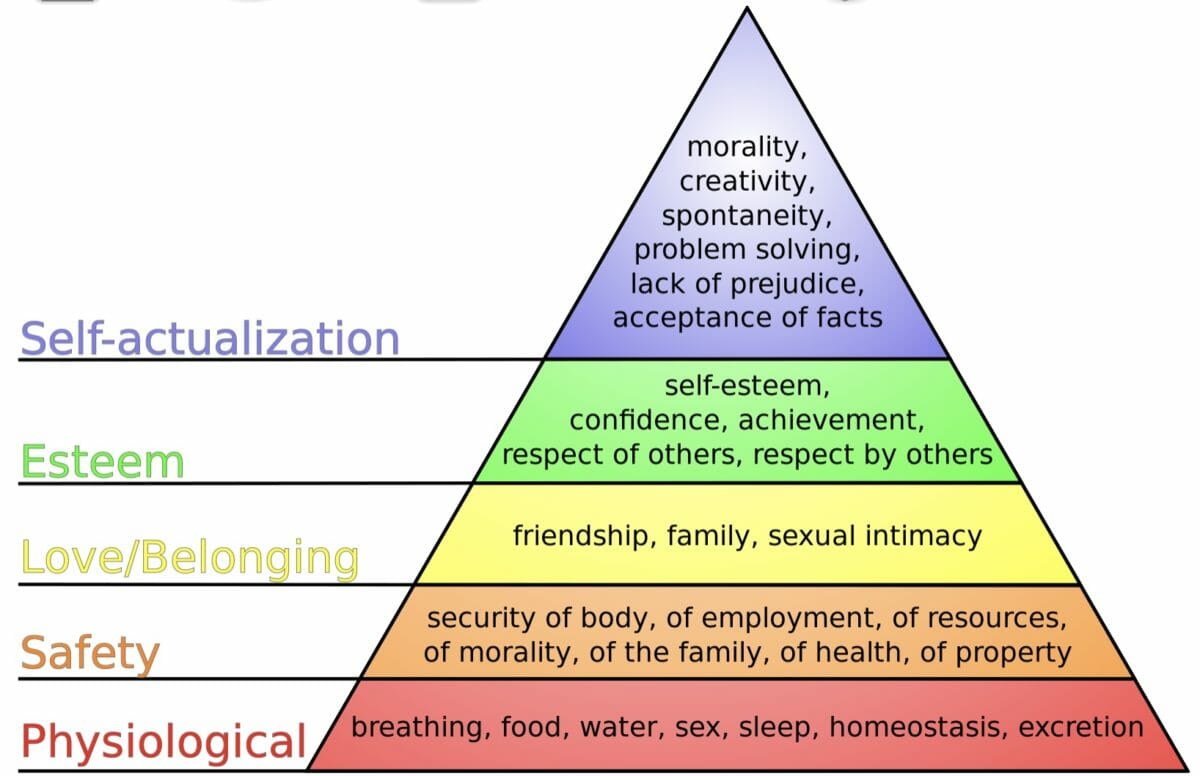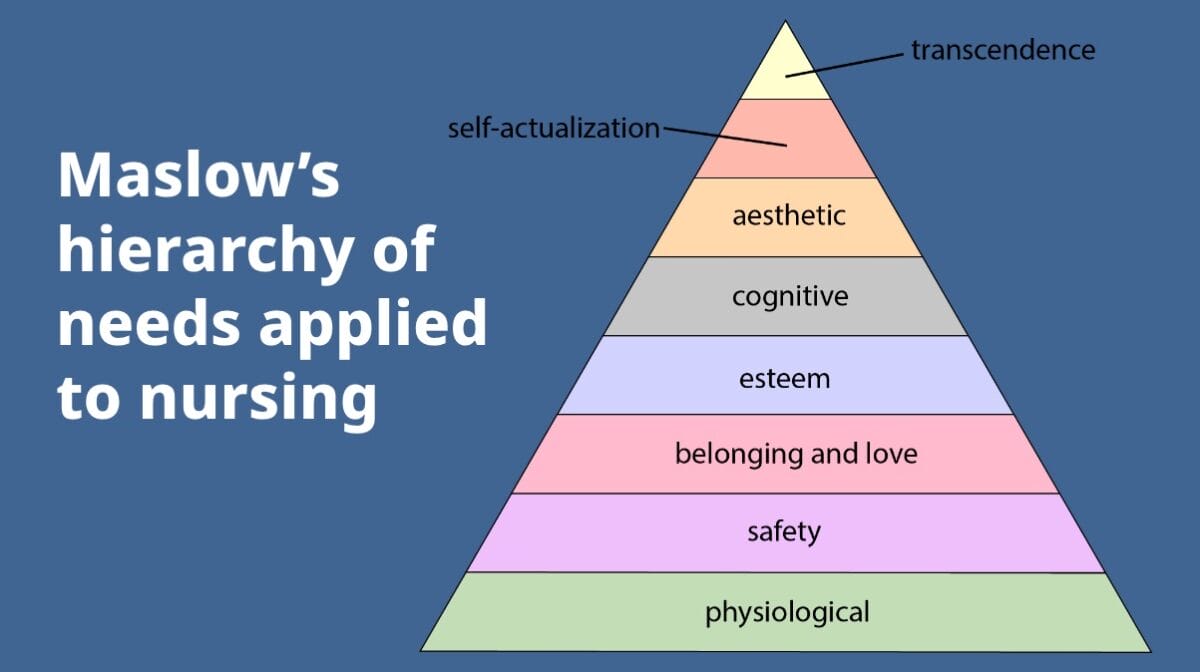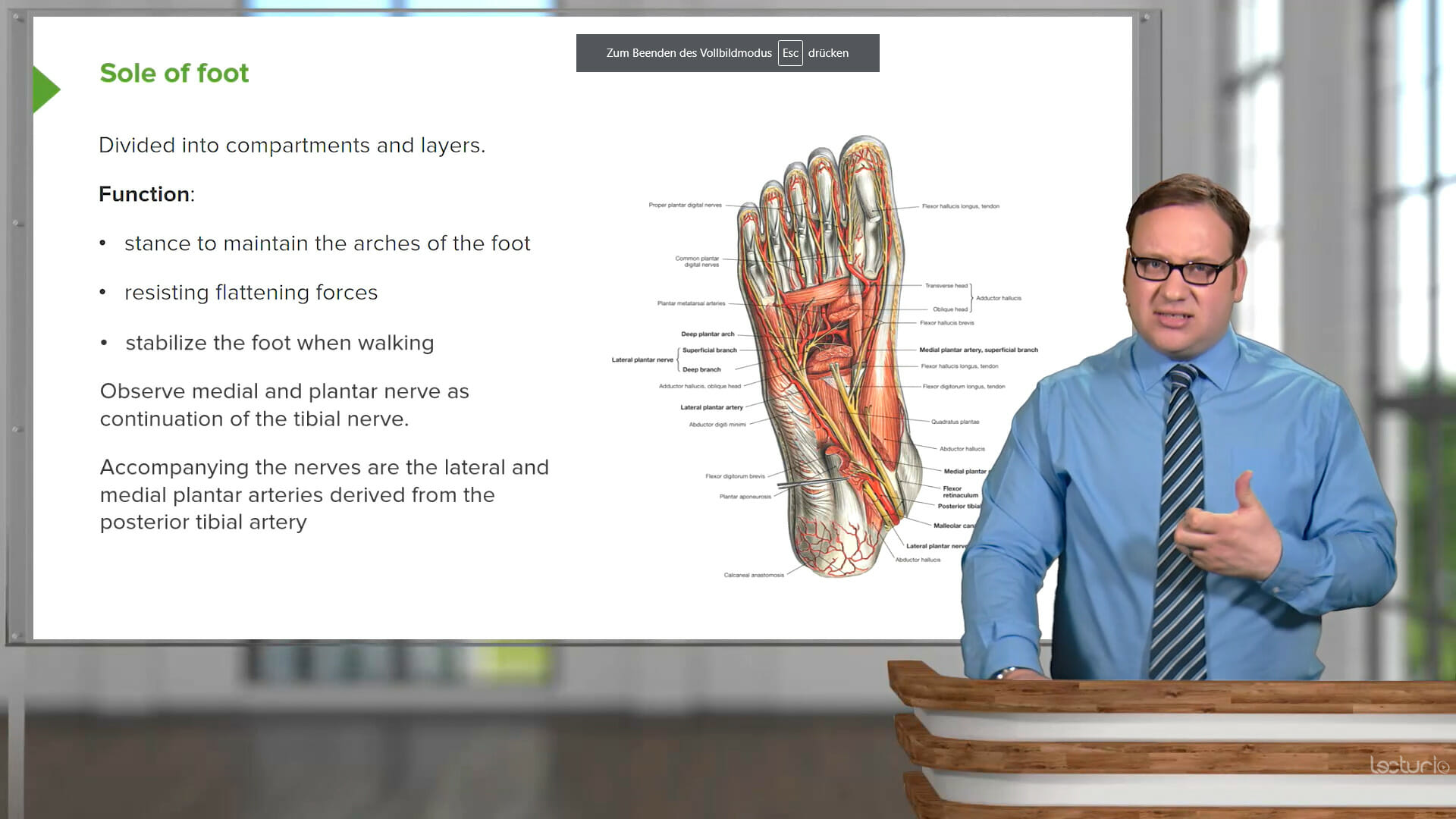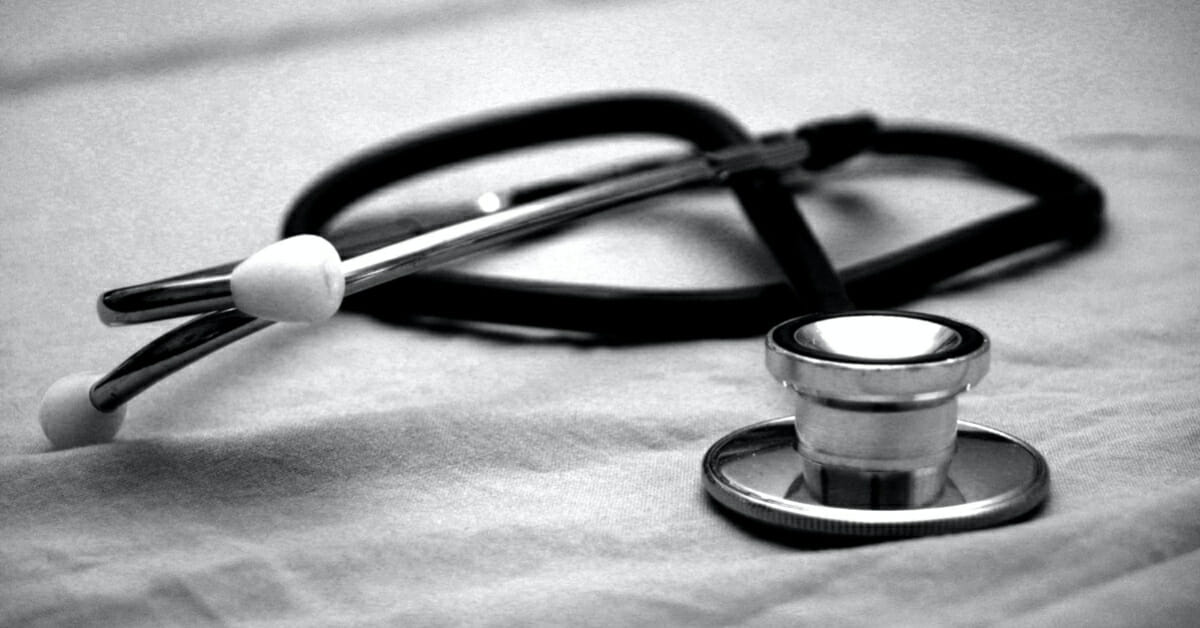What Is Maslow’s Hierarchy of Needs?
Maslow’s Hierarchy of Needs has 5 components which are organized in a triangular graph. The needs listed at the bottom are the most essential while the ones at the top are non-essential. In order to reach the top category of self-actualization, all of the needs beneath it must first be met.
The five categories of Maslow’s Hierarchy of Needs are:
- Physiological needs
- Safety and security
- Love and belonging
- Self esteem
- Self actualization

Image: “Maslow’s hierarchy of needs” by J. Finkelstein. License: CC BY-SA 3.0
1 Physiological needs
Physiological needs are at the bottom of Maslow’s hierarchy, meaning they are the most essential need that must be met. Examples of physiological needs include things like food, clean drinking water, and basic bodily functions. Physiological needs also involve your body’s ability to function properly such as your heart and lung function.
From a nursing perspective, physiological needs include ensuring that a person is breathing okay and that their vital signs are stable.
2 Safety and security
After physiological needs have been met, the next step is to ensure safety and security. Examples of having your safety and security needs met include having a safe home to live in and having basic financial security.
In nursing, your patients’ safety should always be one of your greatest concerns, whether it be administering medications or ensuring your patient is safe in their room.
Security for your patient might look like ensuring that only authorized visitors come to see them. These are only a few examples of safety and security in nursing but safety should be a top priority in everything you do as a nurse.
3 Love and belonging
The next category on Maslow’s Hierarchy is the human need for connection, empathy, and compassion from others. Once you get to this level of Maslow’s Hierarchy, you are building trusting relationships with the people in your life.
As nurses, we often spend a full 12-hour day caring for our patients. We see our patients frequently throughout the day and we talk to them often. Building a rapport with patients and helping them feel seen, heard, and safe with you can help them with the emotional burden that often comes with being hospitalized.
4 Self-esteem
Your self-esteem is your sense of self-worth. When searching for a higher sense of self-esteem, a person yearns to feel respected and appreciated by others. Having good self-esteem also means feeling recognized for your accomplishments.
Nurses can help their patients feel a strong sense of self-esteem by encouraging them to be as independent as possible, depending on the patient’s situation.
5 Self-actualization
Self-actualization is a person’s ability to see their potential and it is at the top of Maslow’s Hierarchy of Needs, meaning that a person must achieve all of the other steps before they can accomplish this one.
Helping to ensure that a patient’s other needs are met and making sure that they feel well-equipped to leave the hospital can help them maintain a sense of self-actualization.
How Can Maslow’s Hierarchy of Needs Be Applied to Nursing Shifts?
When organizing a nursing shift, you can focus on Maslow’s Hierarchy as a way to prioritize your time and choose which tasks to complete first. Some examples of your patient’s needs in relation to Maslow’s hierarchy are listed below:
- Physiological needs: Oxygen, nutrition, fluids, body temp, toileting/elimination, shelter must be covered/ensured at all times as a basis for everything else. When prioritizing tasks for your shift, physiological needs should be your top priority.
- Safety and security: Physical safety is a core concept in nursing. Your patient’s safety should always be considered when completing any nursing interventions.
- Love and belonging: Ensuring your patients are able to communicate with their loved ones and helping to facilitate visits from family when necessary. These are the type of tasks that you would complete after ensuring that the above needs are first met.
- Self-esteem: Encouraging patients to do things for themselves while hospitalized (when they are able to), empowering them with the information they need to have a successful discharge
- Self-actualization: Positive conversation with your patient can help with self actualization, such as when you encourage them that they’re ready to go home or remind them of how far they have come
Even though Maslow’s Hierarchy of Needs is typically thought of as a psychology concept, it is also very applicable to the field of nursing. Below, I will explain some of my personal experience using Maslow’s Hierarchy of Needs in my own job as a nurse.
Real-World Example: Nursing Shift Walkthrough
Nursing shifts can be chaotic and unpredictable, but when you’re first starting out, it is good to have a general idea of how you would ideally organize your shift on a normal day, and Maslow’s Hierarchy can help you do just that!
Below, I’ve broken down an example shift, using Maslow’s Hierarchy as a basis.
7AM–8AM: Bedside shift report and planning your day
At the start of the shift, you will find the previous shift’s nurse who cared for the patients you will be getting. They will give you a report on these patients, telling you about why the patients are here and any special considerations you’ll need to know in caring for them.
Usually, shift reports can be completed within the first 30 minutes of the shift. After that, I usually take some time to sit at my computer and look through each patient’s medication list and any notes the doctors have put in, creating a checklist with all the medications I will have to administer throughout the day.
Spending some time looking through each patient’s chart helps with planning your day and deciding which patient will be your top priority based on their physiologic needs (monitoring vital signs, making sure they get the medications they need, etc).
8AM–9AM Patient rounding, medications administration and assessing
Around 8AM is when I usually head to the medication room to collect the needed medications for the first patient I will see. I go to see the patient, give them their medications and perform my nursing assessment. During this time, I also:
- Ensure that they get their breakfast tray, if they are able to eat
- Talk with them about any concerns they are having such as pain
- Ask when their last bowel movement was
During this time, you are still focusing on physical needs, but you can also think about safety and security
- When you leave the room, ask if they want their door left opened or shut.
- If the patient is a fall risk, you want to make sure that fall precautions are in place.
- Pay close attention when administering medications and check all of your 5 rights before giving anything.
All of these steps help to ensure safety and security.
9AM–11AM Finishing patient rounds and beginning charting
It will usually take about 2 hours to finish administering medications to my patients and assessing them. I like to be able to sit down by around 10:30 to work on my charting and review any new orders that have been put in for the patients. While unexpected events can cause delays, strive to stay ahead. By the time you’re sitting down at the computer, you should have addressed your patients’ physiological needs and safety.
11AM–2PM Finishing charting, prioritizing additional tasks, checking back in with patients, lunch
Your afternoon as a nurse will vary quite a bit depending on where you work and the type of day you are having. Between the hours of 11AM and 2PM, I typically find myself checking back in with patients and doing my afternoon charting. This is a good time to start prioritizing your patient’s next needs on Maslow’s Hierarchy:
- You can help with love and belonging by checking in and helping to facilitate any family visits.
- You can also help with self-esteem by providing patient education when it is needed.
- You may not be providing self-actualization at the end of every shift, depending on your patients situation. If one of your patients is getting ready to go home, you may meet this need by helping to encourage and empower them, reminding them of the progress they’ve made.
2PM–6PM Afternoon rounding, preparing for shift change
The end of the shift usually involves getting ready for shift change. In preparation of shift change, I always make sure that my patients’ needs have been met, covering as much of Maslow’s Hierarchy as possible. That way, when the next nurse comes on shift, I know that I have done everything in my power to serve my patients. Keep in mind, you may not meet every need on Maslow’s Hierarchy during every shift. To be honest, I’ve had many shifts that were very busy, causing me to prioritize only the most essential tasks. Luckily, other nurses know this and will understand if some lower priority work was left undone.
Final Thoughts
Nursing shifts vary quite a bit. Some days are well organized and flow well, while others are anything but. Either way (or even especially when it gets chaotic), it helps to have a structured guideline for how you should prioritize your time throughout your shift and Maslow’s Hierarchy of Needs can be just that.





